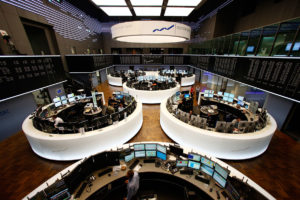
The Improving Outlook for European Equities
Hong Kong, 1st May 2017
Anatole Kaletsky wrote a good article at the end of last week on why he expects European stocks to do well and to outperform the US going forward. He highlights three major sources of support:
1. Improving economic data from Europe (particularly notable in contrast with recent disappointments in the hard data from the USA).
2. Continuing ultra-easy monetary conditions from the ECB through 2018 at least, and
3. The recent removal of the key political risks (he sensibly assumes that there will not be an 18% swing in French political opinion over the next week).
To that list, I would also add a fourth reason to expect equity outperformance of Europe over the USA: current valuations. US stocks are undeniably expensive compared to historical valuations. The CAPE for the S&P 500 is at 29.3 – not as high as the 2000 bubble, but higher than 2007 and on a level with the top in 1929. According to valuation research from Advisor Perspectives, the S&P 500 is over two standard deviations overvalued compared with long-term historical readings.
European stocks currently offer better value. Forward PE for the Euro Stoxx 50 is at 14.6, compared with 18.4 for the S&P 500, meaning that buyers are currently being asked to pay 26% more for expected earnings from the USA than they would get for the same amount of expected earnings from Europe. Investors have to ask if that is still fair as some of the uncertainties around Europe fall out of the equation.
If European stock indices do perform better than their American counterparts, what does this mean for EURUSD? The other parts of the EURUSD puzzle remain the same. The Eurozone has an annual current account surplus of $400bn a year while the USA runs a deficit of $480bn, so trade flows continue to contribute a steady flow of EURUSD buying. On the other side of the flow sheet, the interest rate differential is very much in the dollar’s favour, and will remain so for years to come. Bond investors will continue to be sellers of EURUSD if interest rate differentials remain steady or even increase further, and international companies will increasingly use the EUR and JPY as funding currencies instead of the USD, leading to more EURUSD selling. As for speculators, if the COT report from the CFTC is any guide, speculators have been short EURUSD for about 3 years but the current net position is the smallest in a long time. Total open positions remain elevated, so it appears that the well-established spec shorts have been balanced by new longs put on over the past 4 months.
All in all, the EURUSD picture has been reasonably balanced, leaving spot at 1.09, the middle of the fairly narrow 2-year range. If European equities start to look more attractive than those in the US, as Kaletsky suggests, this may well be enough to start the world’s most important currency pair on a new upward trend.
Receive updates by email




On Bubbles and Bitcoin
/0 Comments/in blog, Finance and economics, Financial Markets, Investing /by Andy+China’s Balancing Act
/0 Comments/in blog, Economics, Uncategorized /by Andy+FAANGs for the Memories
/0 Comments/in blog, Financial Markets /by Andy+